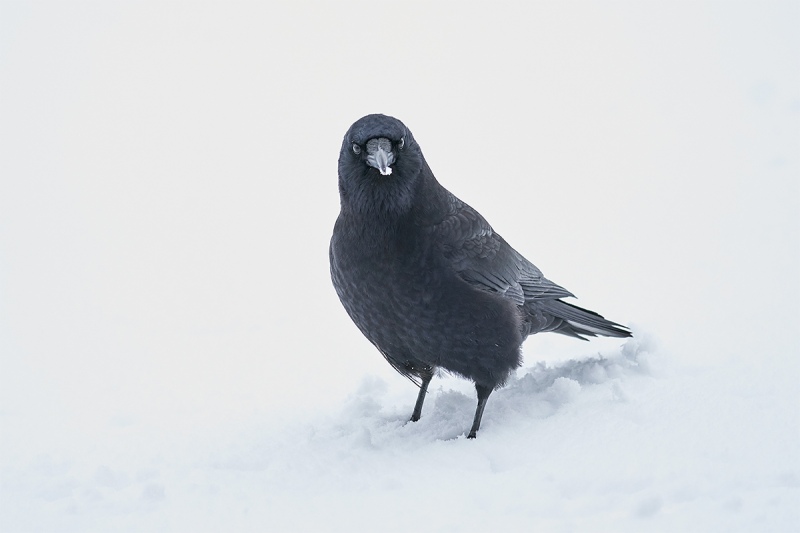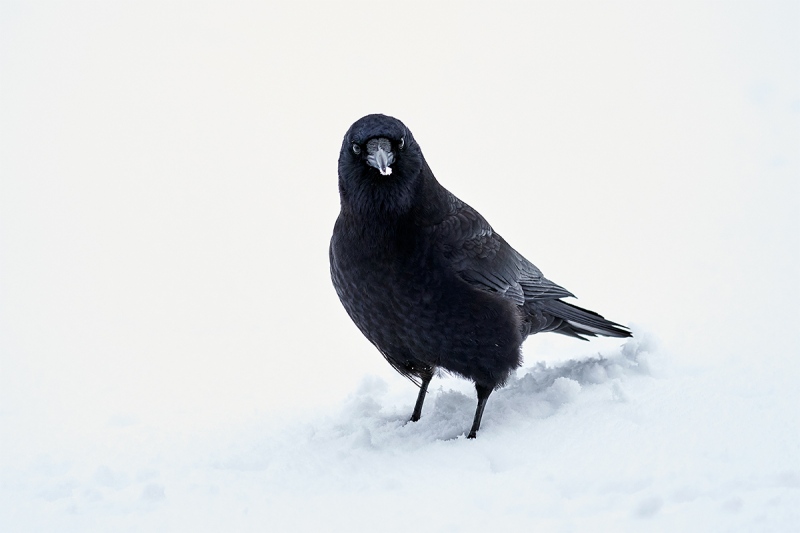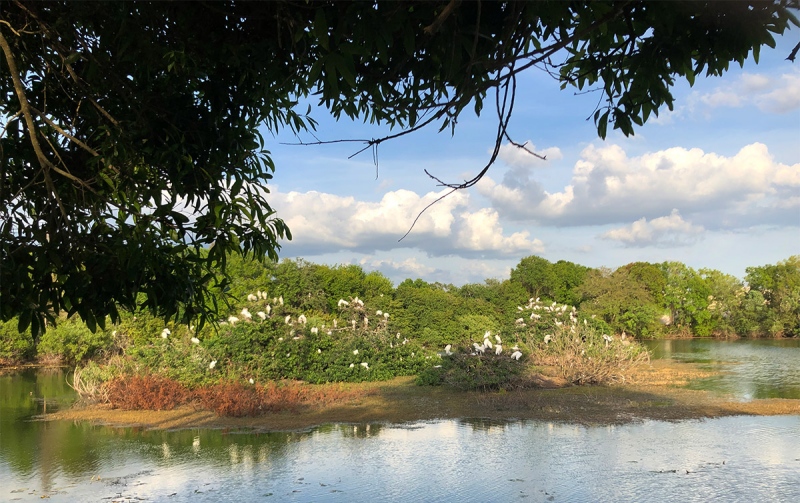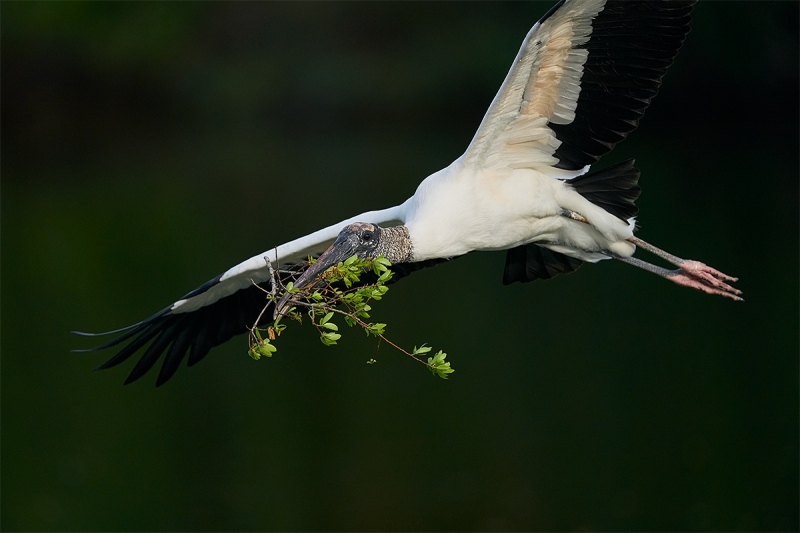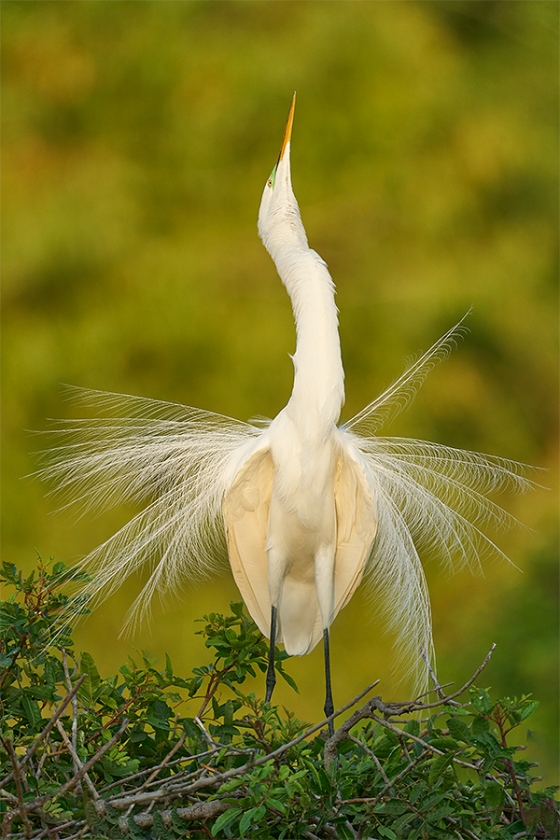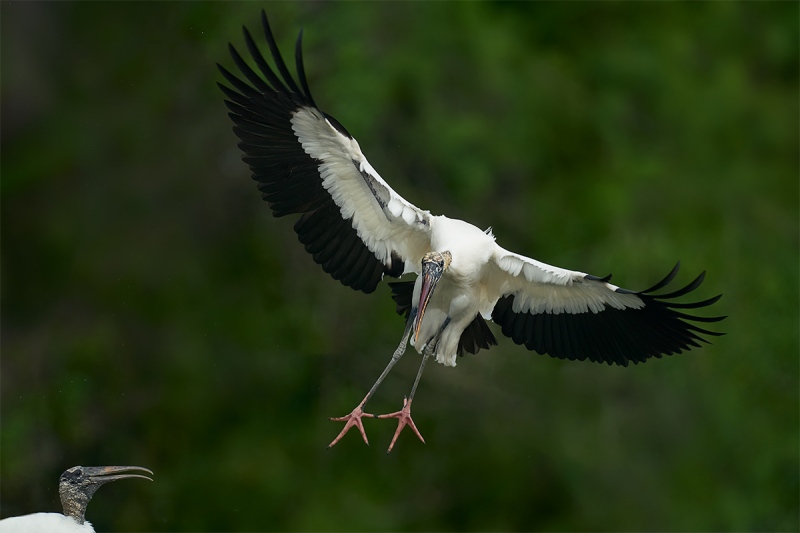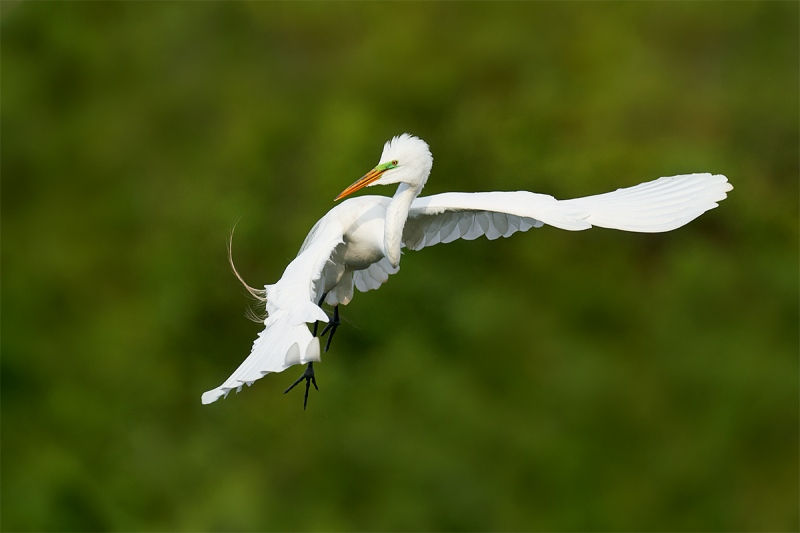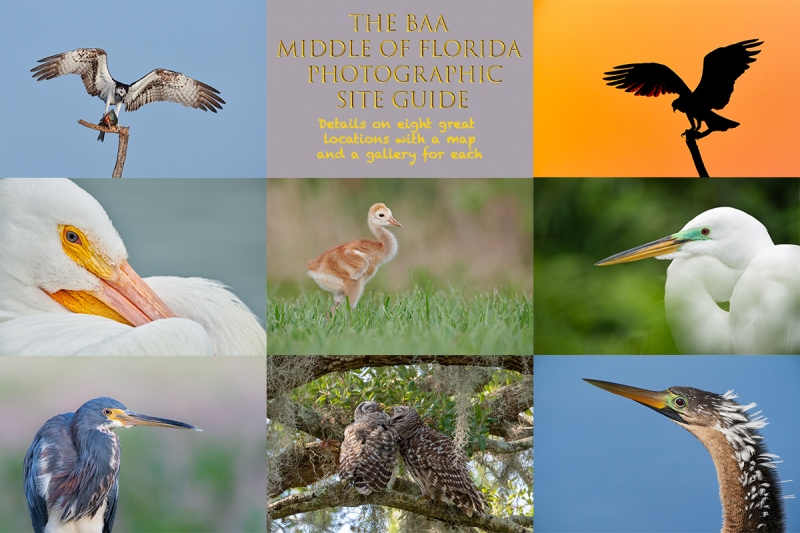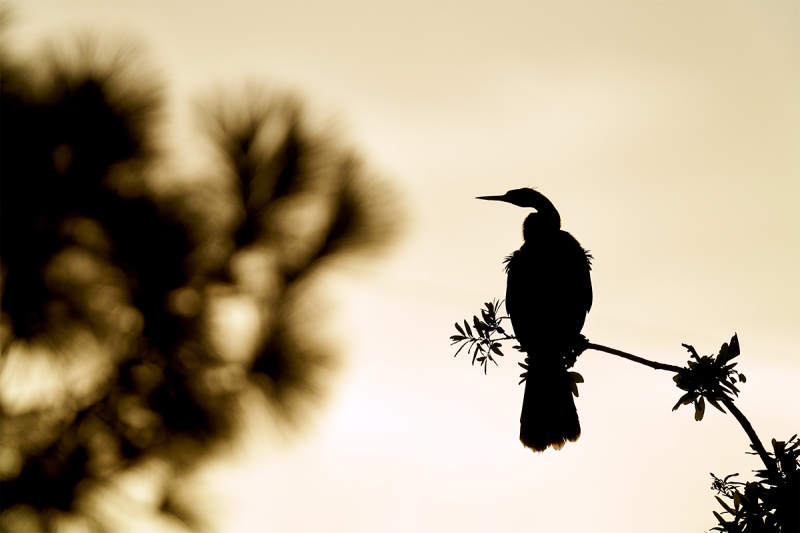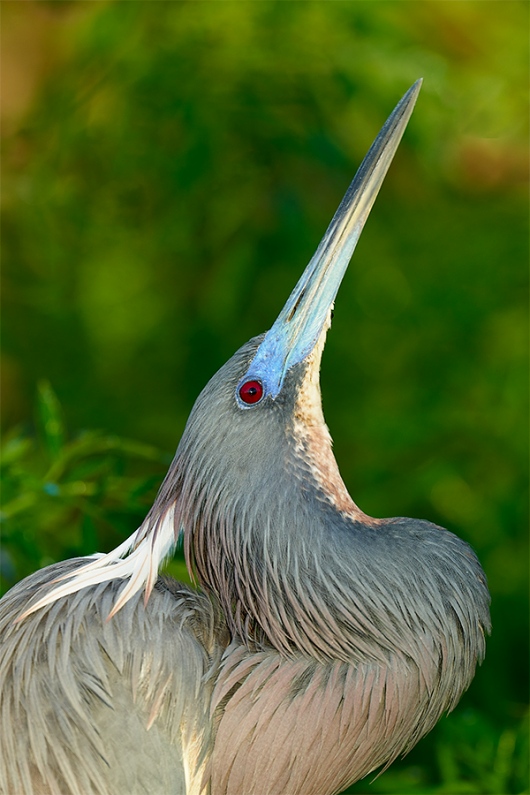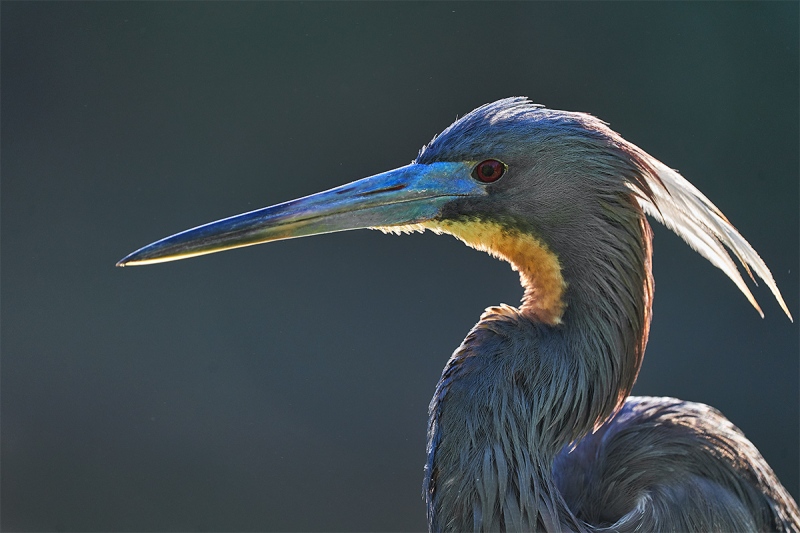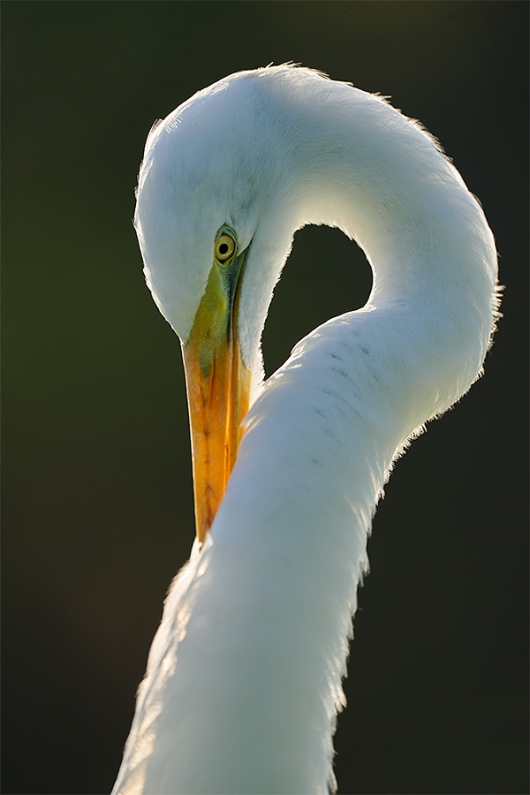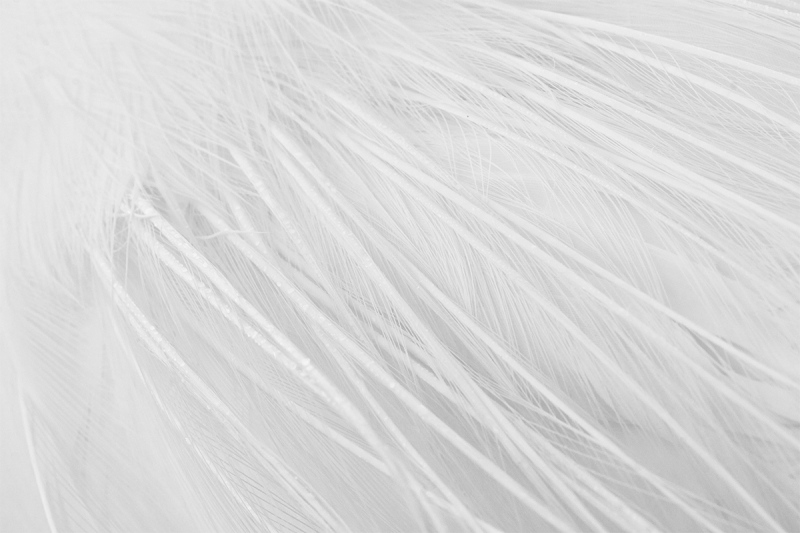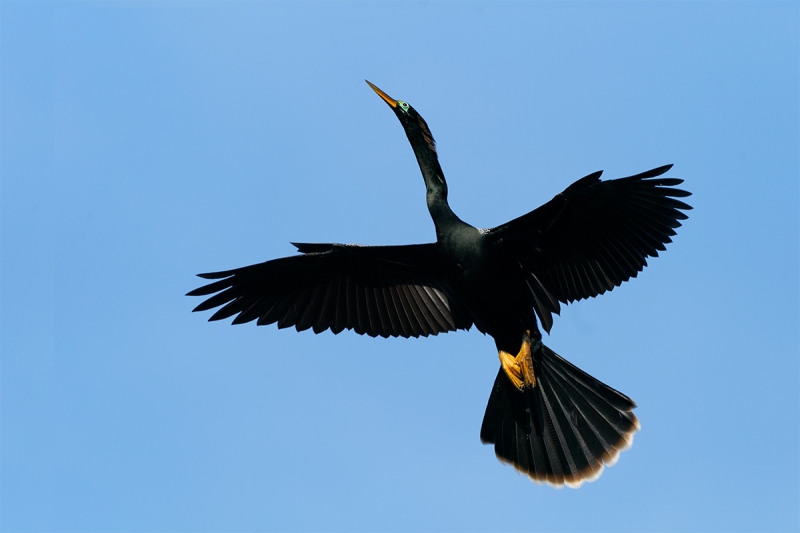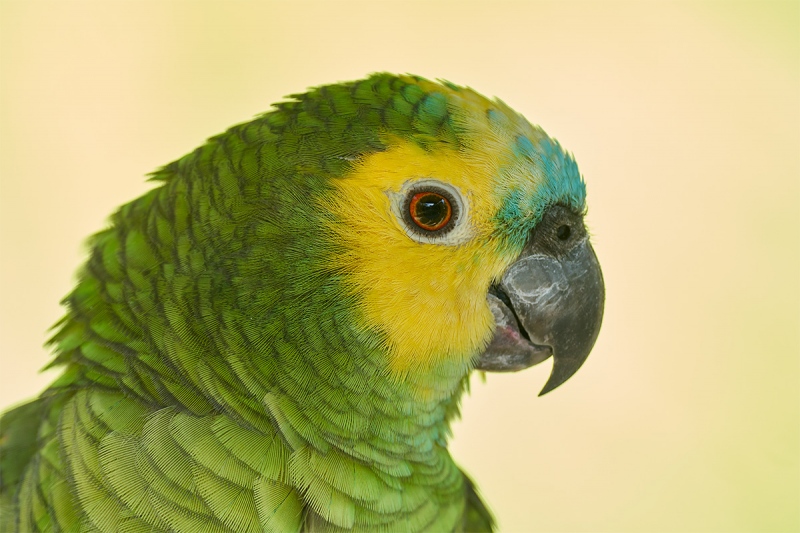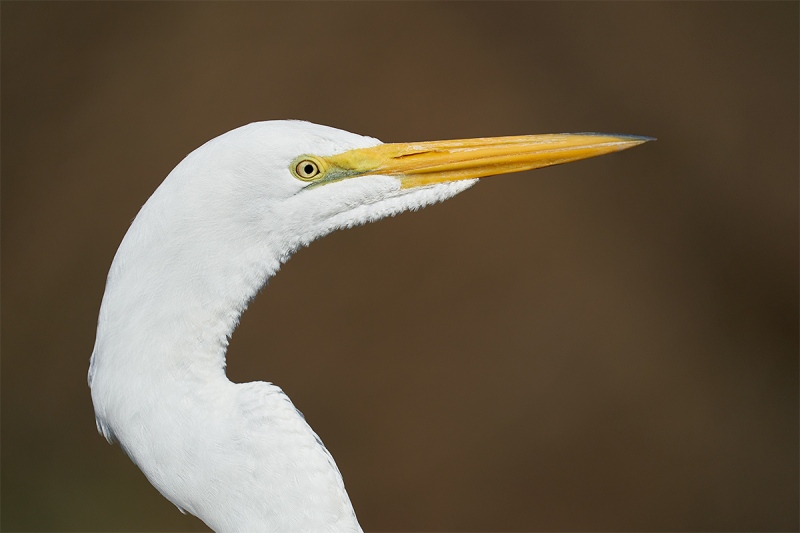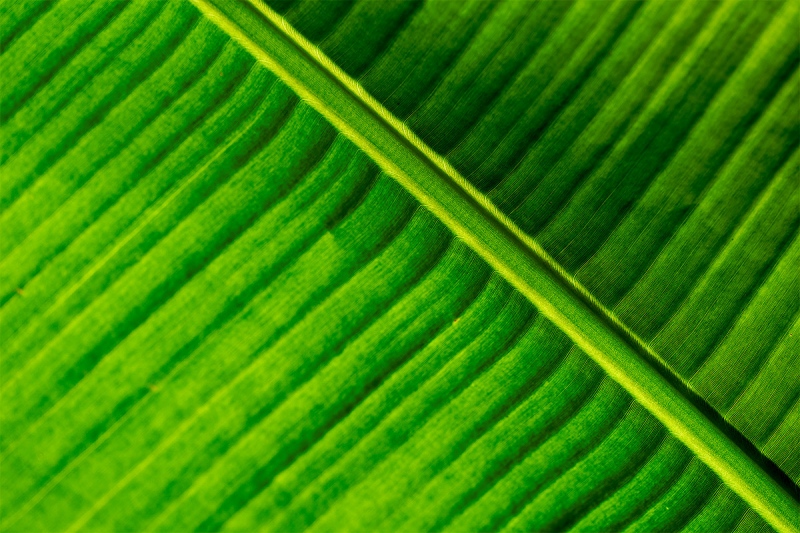March 20th, 2020 What’s Up?
DAY 1 on the spoonbill boat was fair at best. In the morning, we had a very few good chances despite perfect conditions — lovely early light, low tide, and an east wind. In the afternoon we enjoyed the wind shift to the southwest, lots of flying Brown Pelicans (many carrying and landing with nesting material), and some pretty neat White Ibis blastoffs. We head back out this morning, Friday 20 MAR 2020.
BIRDS AS ART
BIRDS AS ART is registered in the U.S. Patent and Trademark Office.
Money Saving Reminder
If you need a hot photo item that is out of stock at B&H, would enjoy free overnight shipping, and would like a $50 discount on your first purchase over $1000.00, click here to order and enter the coupon code BIRDSASART at checkout. If you are looking to strike a deal on Canon or Nikon gear (including the big telephotos) or on a multiple item order, contact Steve Elkins via e-mail or on his cell at (479) 381-2592 (Eastern time) and be sure to mention your BIRDSASART coupon code and use it for your online order. Steve has been great at getting folks the hot items that are out of stock at B&H. Those include the SONY a7r IV, the SONY 200-600, the SONY 600mm f/4 GM, and the Nikon 500mm PF. Steve is eager to please.


Gear Questions and Advice
Too many folks attending BAA IPTs and dozens of photographers whom I see in the field and on BPN, are–out of ignorance–using the wrong gear especially when it comes to tripods and more especially, tripod heads… Please know that I am always glad to answer your gear questions via e-mail. Those questions might deal with systems, camera bodies, accessories, and/or lens choices and decisions.
|
|
|
This image was created on 1 MAR 2020, the last day of the 1st Homer IPT. I used the handheld Sony FE 200-600mm f/5.6-6.3 G OSS lens (at 312mm) with the blazingly fast AF King, the Sony Alpha a9 II Mirrorless Digital camera body. ISO 1250. Exposure determined by Zebras with ISO on the rear wheel: 1/500 sec. at f/6.3 in Manual mode. AWB at 2:25pm on a cloudy afternoon.
Wide AF-C performed surprisingly well. Click on the image to enjoy a larger version.
Image #1: Northwestern Crow on snow, the original version
|
Comments are Always Appreciated
In the What Kind of Nut Photographs Crows on a Mega-Epic Bald Eagle Trip? And Getting the Right Exposure for Black Birds on Snow in Soft Light blog post here, Steve left this comment:
Regarding today’s shot of the crow — the snow behind the bird looks like featureless white, and the bird itself is a dark charcoal-gray rather than black. You don’t think it’s a bit overexposed?
First off Steve, thanks for leaving the comment. All are appreciated. Apologies for not responding sooner but I had a plan for today’s blog post feature and needed a bit of time to execute it.
With regards to the snow, snow, in soft light will rarely show any detail. While it is often possible to pull out some detail using NIK Color EFEX Pro Detail Extractor, even fresh soft snow will wind up looking a bit crunchy. In most cases, I want to avoid that. In addition, I love the detail-less, white background studio-look. Call that artistic license if you would.
With regards to the tonality of the crow, it is very possible that in an effort to reveal detail in the darkest feathers I went a bit too far. That said, interpretations may vary widely due to personal tastes and differences in monitor brightness and viewing conditions. The latter includes the level of ambient light that falls on the monitor being used to view the image … Please scroll down to see a much blacker version.
|
|
|
This image was created on 1 MAR 2020, the last day of the 1st Homer IPT. I used the handheld Sony FE 200-600mm f/5.6-6.3 G OSS lens (at 312mm) with the blazingly fast AF King, the Sony Alpha a9 II Mirrorless Digital camera body. ISO 1250. Exposure determined by Zebras with ISO on the rear wheel: 1/500 sec. at f/6.3 in Manual mode. AWB at 2:25pm on a cloudy afternoon.
Wide AF-C performed surprisingly well. Click on the image to enjoy a larger version.
Image #2: Northwestern Crow on snow, a blacker version
|
The Blacker Crow
There are lots of options for making a crow’s feathers darker. I used just a bit of three different methods to come up with Image #2, the blacker version (immediately above). First, working on a separate layer, I pulled the Curve down. The darkened the bird and the snow a bit. Next, again working on a separate layer, I ran Image > Adjust > Auto Color and reduced the opacity to about 15%. This darkened the BLACKs and the MIDTONEs and lightened the snow. The last step was to add a layer of Selective Color, go to the BLACK and the NEUTRAL channels, and add 2-3 points of BLACK.
The breast of the bird in Image #2 looks a bit too BLACK for me with no detail at all. Perhaps the perfect version of this image lies somewhere between the two presented here today.
What Do You Think?
What do you think? Please be so kind as to share your thoughts on the two versions of Northwestern Crow in Snow by leaving a comment.
|
|
The BIRDS AS ART Current Workflow e-Guide (Digital Basics II).
You can order your copy from the BAA Online Store here, by sending a Paypal for $40 here, or by calling Jim or Jennifer weekdays at 863-692-0906 with your credit card in hand.
|
The BIRDS AS ART Current Workflow e-Guide (Digital Basics II)
All the techniques mentioned above and tons more — along with all of my personalized Keyboard Shortcuts — are covered in detail in the BIRDS AS ART Current Workflow e-Guide (Digital Basics II), an instructional PDF that is sent via e-mail. Learn more and check out the free excerpt in the blog post here. While the new e-Guide reflects my Macbook Pro/Photo Mechanic/DPP 4/Photoshop workflow, folks using a PC and/or BreezeBrowser will also benefit greatly by studying the material on DB II. Note: folks working on a PC and/or those who do not want to miss anything Photoshop may wish to purchase the original Digital Basics along with DB II while saving $15 by clicking here to buy the DB Bundle.
Folks who learn well by following along rather than by reading can check out the complete collection of MP 4 Photoshop Tutorial Videos by clicking here. Note: all of the videos are now priced at an amazingly low $5.00 each.
You can learn how and why I converted all of my Canon digital RAW files in DPP 4 in the DPP 4 RAW Conversion Guide here. More recently, I became proficient at converting my Nikon RAW (NEF) files in Adobe Camera Raw. About two years ago I began converting my Nikon and Sony RAW files in Capture One Pro 12 and continue to do so today.
To purchase Capture One, please use this link. Then you can learn more about Capture One in the Capture One Pro 12 Simplified MP4 Video here. The next step would be to get a copy of Arash Hazeghi’s “The Nikon Photographers’ Guide to Phase One Capture One Pro e-Guide” in the blog post here.
You can learn advanced Quick Masking and advanced Layer Masking techniques in APTATS I & II. You can save $15 by purchasing the pair. Folks can learn sophisticated sharpening and (NeatImage) Noise Reduction techniques in The Professional Post Processing Guide by Arash Hazeghi and edited by yours truly. Please use this link to purchase NeatImage.
To introduce folks to our MP.4 videos and the basics involved in applying more NeatImage noise reduction to the background and less on the subject, I’d be glad to send you a free copy of the Free Noise Reduction Basics MP.4 Video. Simply click to shoot me an e-mail to get your free copy.
If In Doubt …
If you are in doubt about using the BAA B&H affiliate link correctly, you can always start your search by clicking here. Please note that the tracking is invisible. Web orders only. Please, however, remember to shoot me your receipt via e-mail.






Please Remember to use my Affiliate Links and to Visit the BAA Online Store 🙂
To show your appreciation for my continuing efforts here, we ask, as always, that you get in the habit of using my B&H affiliate links on the right side of the blog or Bedfords, for all of your photo and electronics purchases. Please check the availability of all photographic accessories in the New BIRDS AS ART Online Store, especially the Mongoose M3.6 tripod head, Wimberley lens plates, Delkin flash cards and accessories, and LensCoat stuff.
As always, we sell only what I have used, have tested, and can depend on. We will not sell you junk. We know what you need to make creating great images easy and fun. And please remember that I am always glad to answer your gear questions via e-mail.
I would, of course, appreciate your using our B&H affiliate links or Bedfords for all of your major gear, video, and electronic purchases. For the photographic stuff mentioned in the paragraph above, and for everything else in the new store, we, meaning BAA, would of course greatly appreciate your business. Here is a huge thank you to the many who have been using our links on a regular basis and those who regularly visit the New BIRDS AS ART Online Store as well.
Facebook
Be sure to like and follow BAA on Facebook by clicking on the logo link upper right.
Typos
In all blog posts and Bulletins, feel free to e-mail or to leave a comment regarding any typos or errors. Just be right :).
March 18th, 2020 What’s Up?
I have added a box of disposable lightweight rubber exam gloves to my coronavirus protection kit; be sure not to touch your face with the gloves on and be sure to turn them inside out and discard theem after each use. I was quite surprised that my local pharmacy had plenty in stock. Be careful, be safe, and stay healthy.
On Monday afternoon I photographed at the Brandon rookery. With a north wind right in my face and the sun behind me, photography was very tough. But I made two very nice images. On Sunday morning DeSoto was great with lots of tern flight, three dark morph Reddish Egrets — one more beautiful than the next, and several big shorebird flocks. I headed back to Brandon on Tuesday afternoon and was glad that the wind switched from north to south at about 5pm. Again, I made two very nice images.
On Wednesday morning DeSoto was beyond spectacular. I am pretty sure that I created no less than 20 family-jewels type images. There were lots of bathing Royal Terns and Laughing Gulls and endless opps with incoming terns in flight. Then a huge Snowy Egret/Red-breasted Merganser feeding spree. As icing on the cake, the gorgeous dark morph Reddish Egret landed right in front of us while the light was still very sweet. I was off the beach before 9:00am. And yikes, I forgot to mention that I had one really good flight chance with a Caspian Tern and did not fan on it …
Please Take a Moment …
in the last blog post here, I wrote, Please take a moment and let us know your choices for the two strongest images and the two weakest images along with your reasons. Only four folks responded (and one was my sister). I’d love to hear your thoughts.
IPT Udpates
You can access the full listings and all IPT details here.
BIRDS AS ART
BIRDS AS ART is registered in the U.S. Patent and Trademark Office.
Money Saving Reminder
If you need a hot photo item that is out of stock at B&H, would enjoy free overnight shipping, and would like a $50 discount on your first purchase over $1000.00, click here to order and enter the coupon code BIRDSASART at checkout. If you are looking to strike a deal on Canon or Nikon gear (including the big telephotos) or on a multiple item order, contact Steve Elkins via e-mail or on his cell at (479) 381-2592 (Eastern time) and be sure to mention your BIRDSASART coupon code and use it for your online order. Steve has been great at getting folks the hot items that are out of stock at B&H. Those include the SONY a7r IV, the SONY 200-600, the SONY 600mm f/4 GM, and the Nikon 500mm PF. Steve is eager to please.


Gear Questions and Advice
Too many folks attending BAA IPTs and dozens of photographers whom I see in the field and on BPN, are–out of ignorance–using the wrong gear especially when it comes to tripods and more especially, tripod heads… Please know that I am always glad to answer your gear questions via e-mail. Those questions might deal with systems, camera bodies, accessories, and/or lens choices and decisions.
|
|
|
i-Phone 8+ image. See The iPhone Photography e-Guide by Dr. Cliff Oliver here (in the BAA Online Store).
Image #1: The difficult-to-photograph Wood Stork rookery
|
A Hard Place to Shoot
The problems at the Brandon Rookery are myriad:
- 1- From the deck, your line of sight is often blocked.
- 2- There are too many Wood Stork nests too close together.
- 3- As the light gets sweeter late in the day, much of the colony is shaded.
- 4- Cluttered backgrounds predominate.
- 5- North or east winds make things very difficult.
- 6- Working left of the deck opens up sight-lines but creates light angle problems on sunny afternoons.
|
|
|
This image was created on 16 MAR 2020 at the Brandon Rookery. I used the Induro GIT 304L/FlexShooter Pro-mounted Sony FE 600mm f/4 GM OSS lens, the Sony FE 1.4x Teleconverter and the blazing fast Sony Alpha a9 II Mirrorless Digital camera body) that features incredibly accurate AF. ISO 800. Exposure determined by Zebras: 1/2500 sec. at f/5.6 in Manual mode. AWB at 4:45pm on a sunny afternoon.
Center Zone AF-C was active at the moment of exposure. As per RawDigger, the area of sharpest focus was on the leaf just behind and below the stork’s eye. Click on the image to see a larger version.
Image #2: Wood Stork with nesting material/tight flight
|
Anticipating Situations
With wind against sun on Monday afternoon, flight photography was difficult at best. The key was watching the birds and noting their flight patterns; the trick with wind against sun is to find the odd bird that is flying toward you (however briefly). I was able to do just that with Image #2. I was, however, quite lucky in that the leaves did not obstruct the stork’s face as they often do.
Great Egret Displaying
Creating this image required a lot of work in the field and during the post-processing as well. In the field, it took me quite a while to find the perfect perspective, one that minimized the large foreground twigs and thhe tops of the heads of serval Wood Storks and provided a distant, relatively distraction-free background. In addition, choosing the right focal length required some thought. Working in vertical format, I settled on 1200mm; that required very careful side-to-side framing to avoid clipping the breeding aigrettes. The last piece to the puzzle was using the best SONY AF Area option. I started with Tracking Flexible Spot (M) but that failed miserably as it could not see enough of the bird’s face to hold focus. My efforts with Tracking Zone proved equally futile. So I switch to Upper Center Zone and did not half-press the shutter button until the bird began to raise its head. Bingo!
I had two major problems in post: removing several large twigs (some of which merged with the erect breeding plumes) and losing some distracting background elements. For the former, I worked very large and employed all of my tricks: the Patch Tool, the Spot Healing Brush, the Clone Stamp Tool (often as part of Divide and Conquer), Content-Aware Fill, and a single Quick Mask warped and refined by a Regular Layer Mask. For the background, I used Content-Aware Fill to eliminate several large very dark areas and then cleaned and smoothed things up on a new layer by running at 60-pixel Gaussian Blur, adding a Hide-All Mask, hitting B/D, and painting in the blur as needed with a large, soft 50% opacity brush being sure to stay well away from the bird.
All of the above (plus tons more) is detailed in BIRDS AS ART Current Workflow e-Guide (Digital Basics II), an instructional PDF that is sent via e-mail. Learn more and check out the free excerpt in the blog post here.
The a9 ii and Flight Photography at 1200mm with a Relatively Low Shutter Speed: Astounding
The more I use my two a9 ii bodies the more I love then and the more I am astounded. Though I was concentrating on the u-shaped gap between the two sections of the
colony I did not see this bird heading back to its nest until the last second. I wheeled the lens, acquired focus instantly, and was shocked on my laptop when the image was sharp on the eye. I did clip two primary tips on the bird’s right wing so I added canvas using Content-Aware Fill. That did a perfect job with the smaller missing wingtip but not with the longest feather. That one needed a rotated and warped Quick Mask to come up with a halfway decent result. The background for this image got the same treatment as detailed for Image #3 above. Again, all (plus tons more) as detailed in BIRDS AS ART Current Workflow e-Guide (Digital Basics II), an instructional PDF that is sent via e-mail. Learn more and check out the free excerpt in the blog post here. See also the techniques detailed in APTATS I & II.
Image Question
Do you like the greeting committee of one or would you have evicted the head of the stork in the lower-left corner?. Either way, why?
Lucky, Lucky, Lucky!
This is one of the two birds paired at the nest seen in Image #3. I was on the lover’s quarrel right from the get-go but at 840mm had zero chances of getting both birds in the frame. I stayed on the birds until they broke apart and by luck, picked the right one as they split up. One bird flew back to the nest while the other screamed back at it in protest. Center Zone for flight and action rocks even at 840!
The Brandon Rookery
You can find details on photographing at this challenging but rewarding site in The BAA Middle of Florida Photographic Site Guide.
|
|
The BAA Middle of Florida Photographic Site Guide
You can purchase your copy here in the BAA Online Store.
|
The BAA Middle of Florida Photographic Site Guide
126 pages, 87 photographs by Joseph Przybyla and Arthur Morris.
The PDF for this e-Guide is an electronic download sent via e-mail.
Purchase your copy here in the BAA Online Store.
I had thought about doing a guide to some of the great but little-known photo hotspots around central Florida for about a decade, but those plans never came to fruition. I met Joe online in the Avian Forum at BirdPhotographer’s.Net about two years ago. Joe’s photography has improved tremendously over the past few years; he credits the BAA blog, my books and PDFs, and his participation on BPN. The one thing that I learned right from the get-go about Joe is that he is a hard and tenacious worker, always striving to improve his skills and to grow his knowledge base. As he knew of more than a few good spots in central Florida, I broached the idea of us doing a photographic site guide that covered many of the little-known photographic hotspots from Brandon to Lakeland to Joe Overstreet Road to Indian Lake Estates (my Florida home for the past 20 years or so). After more than many, many dozens of hours of effort, The BIRDS AS ART Middle of Florida Photographic Site Guide is now a reality. Thanks to Joe’s wife Dottie for her review of our writing. We all learned once again that writing is a process, a back and forth process. All thanks to the white pelicans of Lakeland. Here are the locations that are detailed in this e-Guide:
- Indian Lake Estates: Sandhills Cranes with chicks and colts, lots of vultures, and Ospreys up the kazoo!
- Gatorland, Kissimmee: Learn to make great images of wading birds in a cluttered rookery.
- The Brandon Rookery: Great for nesting Wood Storks, Great Egrets, and more.
- Circle Bar B Reserve, Lakeland: Here you will find a great variety of avian subjects in a great variety of habitats.
- Lake Morton, Lakeland: There are lots of silly tame birds here including and especially American White Pelican during the colder months.
- Lake Mirror, Lakeland: Tame Anhingas, Limpkins, and a zillion White Ibises at times.
- West Lake Parker, Lakeland: Here you will have a chance for two difficult birds, Snail Kite, and Purple Gallinule.
- Joe Overstreet Road, Kenansville: Crested Caracara, meadowlarks, Loggerhead Shrike, and much more on the fenceposts and barbed wire.
Each location includes a map, a detailed description of the best spots, best season, light and time of day instructions, the expected species, and an educational and inspirational gallery that is designed to open your eyes as to the possibilities.
You can purchase a copy here in the BAA Online Store.
If In Doubt …
If you are in doubt about using the BAA B&H affiliate link correctly, you can always start your search by clicking here. Please note that the tracking is invisible. Web orders only. Please, however, remember to shoot me your receipt via e-mail.






Please Remember to use my Affiliate Links and to Visit the BAA Online Store 🙂
To show your appreciation for my continuing efforts here, we ask, as always, that you get in the habit of using my B&H affiliate links on the right side of the blog or Bedfords, for all of your photo and electronics purchases. Please check the availability of all photographic accessories in the New BIRDS AS ART Online Store, especially the Mongoose M3.6 tripod head, Wimberley lens plates, Delkin flash cards and accessories, and LensCoat stuff.
As always, we sell only what I have used, have tested, and can depend on. We will not sell you junk. We know what you need to make creating great images easy and fun. And please remember that I am always glad to answer your gear questions via e-mail.
I would, of course, appreciate your using our B&H affiliate links or Bedfords for all of your major gear, video, and electronic purchases. For the photographic stuff mentioned in the paragraph above, and for everything else in the new store, we, meaning BAA, would of course greatly appreciate your business. Here is a huge thank you to the many who have been using our links on a regular basis and those who regularly visit the New BIRDS AS ART Online Store as well.
Facebook
Be sure to like and follow BAA on Facebook by clicking on the logo link upper right.
Typos
In all blog posts and Bulletins, feel free to e-mail or to leave a comment regarding any typos or errors. Just be right :).
March 16th, 2020 What’s Up?
I am hoping that everyone is staying safe and in good health.
As seemed likely, the Georgia Nature Photographers Association Annual Expo Conference at Villas by The Sea Resort & Conference Center, Jekyll Island, GA has been canceled.
I am heading over to Fort DeSoto today for two days of photography and following that up with three days on the Hooptie Deux for spoonbills and more.
Please Take a Moment …
Please take a moment and let us know your choices for the two strongest images and the two weakest images along with your reasons. All it all, it turned out to be a pretty productive day at Gatorland.
From Fred Innamorato via e-mail
Hi Artie,
I want to thank you for making the Sony e-Guide and videos available and for the work you put into the blog as well as for your books that teach us how to photograph birds and also for your camera User’s Guides. There is just no possible way I would have been able to get my Sony a9 ii camera settings so technically correct for doing birds in flight on my own without this guide. in my opinion, Sony should pay you for taking on the task of educating their customers. Sony has created an amazing camera but they fail to explain to their customers how to take full advantage of it. I appreciate that you know and have access to some very competent people with the technical backgrounds to assist you in your field experimentation to come up with the best and most practical and useful Menu Settings for bird photography. We all will benefit from your unique ability to pull this together. I am especially happy with your instructions on how to use the Zebra Settings for getting proper exposures. I really can’t thank you enough Artie for making my bird photography hobby so much more enjoyable than it would have been otherwise. My photography brings me great satisfaction. Sharing quality photographs with my family and friends has generated lots of interest in my hobby and why I do it. Life is good!
I highly recommend the purchase of your Sony e-Guide and Video(s). This information is just not available anywhere else. Even from Sony …
Fred Innamorato
The Sony Camera Videos and Pre-publication e-Guide Costs and Discount Info
The cost of the SONY e-Guide is $100.00 US and will include one of the camera set-up videos — we offer one video each for the a7r iii, the a7r iv, the a9, and the a9 ii — and the written guide with the galleries. The guide is now 98% done and you will — of course, receive the final version when it is completed. I sent out the third draft today to those who have purchased the Guide with or without the discount.
Folks who have used my B&H links or purchased their SONY gear from Bedfords will receive said discount based exactly on how much they spent. If you spent more than $10,000 you will receive one free video and the e-Guide. Additional camera videos are $25.00 each. If you spent $2400, you will receive a 24% discount, and so on and so forth. And again, additional camera videos will be $25.00 each.
I will need time to verify your B&H purchases so folks will need to send their receipts and then be a bit patient. It is much easier to verify Bedfords’ purchases but I need those receipts as well.
If you have not used BAA links, please do so in the future. If that is the case and you would like the e-Guide now, please send a Paypal for $100 US to birdsasart@verizon.net and be sure to include the words “SONY Pre-publication Guide” in the Paypal e-mail along with the name of your camera or cameras so that you can receive the correct video or videos. Please add $25 for each additional camera video. Be sure to send a copy of the Paypal transaction to me via e-mail.
Folks who have used BAA links to purchase their SONY gear should send their receipts to me via e-mail asap and let me know which camera videos they need. I will verify their purchases as quickly as possible and send a quote to be paid via Paypal as above.
Thanks to all who have properly used my B&H links or gone through the fabulous Steve Elkins at Bedfords, and thanks to everyone for having faith in the information that I provide, knowing that it will be the best available anywhere.
IPT Udpates
You can access the full listings and all IPT details here.
BIRDS AS ART
BIRDS AS ART is registered in the U.S. Patent and Trademark Office.
Money Saving Reminder
If you need a hot photo item that is out of stock at B&H, would enjoy free overnight shipping, and would like a $50 discount on your first purchase over $1000.00, click here to order and enter the coupon code BIRDSASART at checkout. If you are looking to strike a deal on Canon or Nikon gear (including the big telephotos) or on a multiple item order, contact Steve Elkins via e-mail or on his cell at (479) 381-2592 (Eastern time) and be sure to mention your BIRDSASART coupon code and use it for your online order. Steve has been great at getting folks the hot items that are out of stock at B&H. Those include the SONY a7r IV, the SONY 200-600, the SONY 600mm f/4 GM, and the Nikon 500mm PF. Steve is eager to please.


Gear Questions and Advice
Too many folks attending BAA IPTs and dozens of photographers whom I see in the field and on BPN, are–out of ignorance–using the wrong gear especially when it comes to tripods and more especially, tripod heads… Please know that I am always glad to answer your gear questions via e-mail. Those questions might deal with systems, camera bodies, accessories, and/or lens choices and decisions.
Better Late …
I was late leaving ILE and got to watch a spectacular eastern sky from seven to seven-fifteen am :). For those with a Photographer’s Pass, Gatorland opens at 7:00am. I arrived at about 7:30 🙁 But with a few clouds on the eastern horizon, I managed a single nice silhouette.
With the number of nests down 90% and the number of birds down even more, it took some effort to find a few decent situations in these worst of times. Me-thinks that I did OK.
Spiffy
On my walk-in, I noted several quite spiffy Tricolored Herons. I was lucky to find one in a decent spot with a decent background and began by creating some nice horizontal head portraits. When the bird began displaying, I went to vertical, clipped the crest on the first two, re-composed and got two with the bird’s bill pointing straight up but turned slightly away. As it ended the display and began to lower its head I got lucky as the bird turned its head toward me. Image #2 waas th result of my good fortune.
|
|
|
This image was also created on March 14, 2020 at Gatorland. I used the handheld Sony FE 200-600mm f/5.6-6.3 G OSS lens (at 565mm) with the blazingly fast AF King, the Sony Alpha a9 II Mirrorless Digital camera body. ISO 800. Exposure determined by Zebras with ISO on the rear wheel (I went with lots of Zebras on the backlit white crest): 1/640 sec. at f/6.3 in Manual mode. AWB at 8:49am on a sunny morning.
Tracking Flexible Spot (M) AF-C performed perfectly. Click on the image to enjoy a larger version.
Image #3: Tricolored Heron backlit
|
Backlit
With very few front-lit subjects on the west side of the Swamp Boardwalk, I began searching for backlit subjects and was lucky to find two nice ones, this tricolored and the Great Egret immediately below. The trick with backlit subjects is generally to be able to come up with a dark background; sky backgrounds for strongly backlit subjects. For both images, one of the great tips from The BAA Middle of Florida Photographic Site Guide enabled me to do just that.
|
|
|
This image was created on March 14, 2020 at Gatorland. I used the handheld Sony FE 200-600mm f/5.6-6.3 G OSS lens (at 600mm) with the blazingly fast AF King, the Sony Alpha a9 II Mirrorless Digital camera body. ISO 800. Exposure determined by Zebras with ISO on the rear wheel (I went with lots of Zebras on the brightest sunlit WHITEs): 1/1000 sec. at f/6.3 in Manual mode. AWB at 8:52am on a sunny morning.
Tracking Flexible Spot (M) AF-C performed perfectly. Click on the image to enjoy a larger version.
Image #4: Great Egret backlit preening
|
Flash for Backlit Subjects
In the process of creating the two backlit images here, I realized that using flash at zero or +1 in such situations is a big plus. You can lowerr the ambient exposure while allowing the flash to light the shaded side of the subject. In addition, it is much easier to come up with a pleasing and natural color balance. Doing that with Image # 3 required lots of fancy stepping during post-processing.
Exposure Question
Why did I aim to over-expose the brightest highlights in Images #3 and #4?
|
|
|
This image was also created on March 14, 2020 at Gatorland. I used the handheld Sony FE 100-400mm f/4.5-5.6 GM OSS lens (at 400mm) with the 61MP monster, the Sony Alpha a7R IV Mirrorless Digital camera body ISO 1600. Exposure determined by Zebras with ISO on the rear wheel (I went with faint Zebras on the highlights): 1/125 sec. at f/16 in Manual mode. AWB at 9:09am in the shade of a shelter a sunny morning.
Flexible Spot (S) AF-C. Click on the image to enjoy a larger version.
Image #5: Great Egret aigrettes on back
|
The Right Tool for the Job
Neither the 600/1.4X TC/a7r iv combo or the 2-6/a9 ii rig would have worked for Image #5. I went to the 100-400 for its great close-focus that allowed me to fill the frame with feathers. Remember, you want to go for additional depth-of-field (f/16 here) when you are working at close range.
|
|
|
This image was also created on March 14, 2020 at Gatorland. Again I used the handheld Sony FE 200-600mm f/5.6-6.3 G OSS lens (at 600mm) with the blazingly fast AF King, the Sony Alpha a9 II Mirrorless Digital camera body. ISO 800. Exposure determined by calculation with with ISO on the rear wheel. 1/2500 sec. at f/7.1 in Manual mode. AWB at 9:24am on a sunny morning.
Zone AF-C performed perfectly. Click on the image to enjoy a larger version.
Image #6: Anhinga male landing in tall tree
|
Exposure on the Fly
I had been hoping to photograph an incoming Great Egret or a stick-gathering Snowy Egret in flight so I was set up at ISO 400: 1/2500 sec. at f/7.1 (the equivalent of the oft-recommended ISO 400, 1/2000 sec. at f/8 for bright whites in full sun). When I saw this pretty much black subject flying in, I spun the Control Wheel three clicks clockwise to increase the ISO from 400 to 800 thus doubling the exposure.
Subject in Shade, Background in Sun
I have long loved situations where the subject is in the shade and the background is in full sun. Here the parrot was in the shade of its own personal shelter and the background — actually light-toned vegetation — was in full sun. I made sure to go to total Zebra’s on the background to ensure a correct exposure for the subject. The “over-exposed” background was easily recovered using the Highlight slide in Capture One.
|
|
|
This image was also created on March 14, 2020 at Gatorland. Again I used the handheld Sony FE 200-600mm f/5.6-6.3 G OSS lens (at 600mm) with the blazingly fast AF King, the Sony Alpha a9 II Mirrorless Digital camera body. ISO 800. Exposure determined by calculation with with ISO on the rear wheel. 1/3200 sec. at f/6.3 in Manual mode. AWB at 9:57am on a sunny morning.
Tracking Flexible Spot (M) AF-C performed perfectly. Click on the image to enjoy a larger version.
Image #8: Great Egret head portrait with dead-tree branches background
|
Different Usually Works Well …
Again, following advice from The BAA Middle of Florida Photographic Site Guide, I was able to come up with a totally atypical Gatorland background of dead (or at least leafless) trees.
|
|
|
This image was also created on March 14, 2020 at Gatorland. Again I used the handheld Sony FE 200-600mm f/5.6-6.3 G OSS lens (at 600mm) with the blazingly fast AF King, the Sony Alpha a9 II Mirrorless Digital camera body. ISO 800. Exposure determined by calculation with with ISO on the rear wheel. ISO 400: 1/250 sec. at f/9 in Manual mode. AWB at 10:05am on a sunny morning.
Flexible Spot (S) AF-C performed perfectly. Click on the image to enjoy a larger version.
Image #9: Fern backlit
|
Good Images are Where You See Them
As I have explained here often, and especially in the original The Art of Bird Photography, after years of using long telephoto lenses for years I began to view the world in small rectangular boxes. So when I see snatches of light or color or anything else that I find of interest, it is not a big step from there to envision a strong image …
|
|
The BAA Middle of Florida Photographic Site Guide
You can purchase your copy here in the BAA Online Store.
|
The BAA Middle of Florida Photographic Site Guide
126 pages, 87 photographs by Joe Przybyla and Arthur Morris.
The PDF for this e-Guide is an electronic download sent via e-mail.
Purchase your copy here in the BAA Online Store.
I had thought about doing a guide to some of the great but little-known photo hotspots around central Florida for about a decade, but those plans never came to fruition. I met Joe online in the Avian Forum at BirdPhotographer’s.Net about two years ago. Joe’s photography has improved tremendously over the past few years; he credits the BAA blog, my books and PDFs, and his participation on BPN. The one thing that I learned right from the get-go about Joe is that he is a hard and tenacious worker, always striving to improve his skills and to grow his knowledge base. As he knew of more than a few good spots in central Florida, I broached the idea of us doing a photographic site guide that covered many of the little-known photographic hotspots from Brandon to Lakeland to Joe Overstreet Road to Indian Lake Estates (my Florida home for the past 20 years or so). After more than many, many dozens of hours of effort, The BIRDS AS ART Middle of Florida Photographic Site Guide is now a reality. Thanks to Joe’s wife Dottie for her review of our writing. We all learned once again that writing is a process, a back and forth process. All thanks to the white pelicans of Lakeland. Here are the locations that are detailed in this e-Guide:
- Indian Lake Estates: Sandhills Cranes with chicks and colts, lots of vultures, and Ospreys up the kazoo!
- Gatorland, Kissimmee: Learn to make great images of wading birds in a cluttered rookery.
- The Brandon Rookery: Great for nesting Wood Storks, Great Egrets, and more.
- Circle Bar B Reserve, Lakeland: Here you will find a great variety of avian subjects in a great variety of habitats.
- Lake Morton, Lakeland: There are lots of silly tame birds here including and especially American White Pelican during the colder months.
- Lake Mirror, Lakeland: Tame Anhingas, Limpkins, and a zillion White Ibises at times.
- West Lake Parker, Lakeland: Here you will have a chance for two difficult birds, Snail Kite, and Purple Gallinule.
- Joe Overstreet Road, Kenansville: Crested Caracara, meadowlarks, Loggerhead Shrike, and much more on the fenceposts and barbed wire.
Each location includes a map, a detailed description of the best spots, best season, light and time of day instructions, the expected species, and an educational and inspirational gallery that is designed to open your eyes as to the possibilities.
You can purchase a copy here in the BAA Online Store.
If In Doubt …
If you are in doubt about using the BAA B&H affiliate link correctly, you can always start your search by clicking here. Please note that the tracking is invisible. Web orders only. Please, however, remember to shoot me your receipt via e-mail.






Please Remember to use my Affiliate Links and to Visit the BAA Online Store 🙂
To show your appreciation for my continuing efforts here, we ask, as always, that you get in the habit of using my B&H affiliate links on the right side of the blog or Bedfords, for all of your photo and electronics purchases. Please check the availability of all photographic accessories in the New BIRDS AS ART Online Store, especially the Mongoose M3.6 tripod head, Wimberley lens plates, Delkin flash cards and accessories, and LensCoat stuff.
As always, we sell only what I have used, have tested, and can depend on. We will not sell you junk. We know what you need to make creating great images easy and fun. And please remember that I am always glad to answer your gear questions via e-mail.
I would, of course, appreciate your using our B&H affiliate links or Bedfords for all of your major gear, video, and electronic purchases. For the photographic stuff mentioned in the paragraph above, and for everything else in the new store, we, meaning BAA, would of course greatly appreciate your business. Here is a huge thank you to the many who have been using our links on a regular basis and those who regularly visit the New BIRDS AS ART Online Store as well.
Facebook
Be sure to like and follow BAA on Facebook by clicking on the logo link upper right.
Typos
In all blog posts and Bulletins, feel free to e-mail or to leave a comment regarding any typos or errors. Just be right :).
|
|










